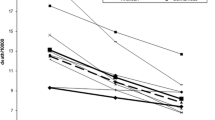Mortality from childhood leukemia was examined particularly in rural countries in relation to any major ruralurban migration. Significant increases have been found in other situations of rural population mixing as predicted by the infection hypothesis. The 1950s and 1960s were of most interest since it preceded the decline in mortality brought about by effective chemotherapy in many countries. The 33 countries covered were all those in the World Health Organization's mortality database. No sensitive measure of rural-urban migration is available for international comparisons. However, it seems noteworthy that Greece and Italy, the two countries with the most striking levels of rural migration in the 1950s and 1960s, also had unusually high mortality rates from childhood leukemia. Greece was most affected proportionally by these population movements and from 1958 to 1972 had the highest recorded mortality from this cause in the world. The problems of international comparisons of mortality data dictate caution in drawing conclusions. However, against a background of other work on population mixing, and in the light of certain considerations, we suggest that the marked rural population mixing in Greece and Italy may have contributed to their high mortality rates from childhood leukemia in the 1950s and 1960s.
Similar content being viewed by others
References
Kinlen, L. Evidence for an infective cause of childhood leukaemia: comparison of a Scottish new town with nuclear reprocessing sites in Britain. Lancet 1988; ii: 1323–7.
Kinlen, LJ, Clarke, K, Hudson, C. Evidence from population mixing in British New Towns 1946–1985 of an infective basis for childhood leukaemia. Lancet 1990; 336: 577–82.
Kinlen, LJ, Hudson, C. Childhood leukaemia and poliomyelitis in relation to military encampments in England and Wales in the period of national military service, 1950–1963. Br Med J 1991; 303: 1357–62.
Kinlen, LJ, O'Brien, F, Clark, K, Balkwill, A, Matthews, F. Rural population mixing and childhood leukaemia: effects of the North Sea oil industry in Scotland, including the area near Dounreay nuclear site. Br Med J 1993; 306: 743–8.
Kinlen, LJ, Hudson, CM, Stiller, CA. Contacts between adults as evidence for an infective origin of childhood leukaemia: An explanation for the excess near nuclear establishments in west Berkshire? Br J Cancer 1991; 64: 549–54.
Langford, I. Childhood leukaemia mortality and population change in England and Wales 1969–73. Soc Sci Med 1991; 33: 435–40.
Kinlen, LJ, John, SM. Wartime evacuation and mortality from childhood leukaemia in England and Wales in 1945–49. Br Med J 1994; 309: 1197–202.
Kinlen, LJ. Epidemiological evidence for an infective basis in childhood leukaemia. Br J Cancer 1995; 71: 1–5.
Kinlen, LJ, Dickson, M, Stiller, CS. Childhood leukaemia and Non-Hodgkin's lymphoma near large rural construction sites: Comparisons of non-nuclear sites with Sellafield. Br Med J 1995; 310: 763–8.
Kosinsky, LA. The Population of Europe. London, UK: Longman, 1970.
Aoki, K, Hayakawa, N, Kurihara, M, Suzuki, S. Death Rates for Malignant Neoplasms for Selected Sites by Sex and Five-year Age Group in 33 Countries 1953–57 to 1983–87. Geneva, Switzerland: International Union Against Cancer, 1992.
World Health Organization. Mortality from Malignant Neoplasms 1955–65. Parts 1 and 2. Geneva, Switzerland: WHO, 1970.
West, R. Childhood cancer mortality: international comparisons 1955–1974. World Health Stat Quarterly 1984; 37: 98–127.
United Nations. World Urbanization Prospects 1990. New York, NY (USA): UN, 1991.
Beijer, G. Rural Migrants in Urban Setting. An Analysis of the Literature on the Problem Consequent on the Internal Migration from Rural to Urban Areas in 12 European Countries (1945–1961). The Hague, the Netherlands: Martinus Nijhoff, 1963.
International Labor Office. Year Book of Labor Statistics 1950–1965. Geneva, Switzerland: 1950–65.
National Office of Statistics in Greece. Resultats du 073 Recensement de la Population et des Habitations. Effectue le 7 Avril 1951. Vol I. Athens, Greece: NOSG, 1961.
National Office of Statistics in Greece. Resultats du 073 Recensement de la Population et des Habitations. Effectue le 19 Mars 1961. Vol I. Athens, Greece: NOSG, 1968.
Carter, FW. Population migration in Greece. Tijdschrift Voor Econ. En Soc. Geografie, MRT. 1968; 59: 100–5.
Trichopoulos D, Papaevangelou G, Danezis J, Kalapothaki V. The Population of Greece. A Monograph for the World Population Year 1974. Paris, France: CICRED Series, 1974: 118.
National Office of Statistics in Greece. The Population Inflow into Greater Athens. A:19. Athens, Greece: NOSG, 1964.
Walker, DS. A Geography of Italy. Second Edition. London, UK: Methuen, 1967.
Bethemont, J, Pelletier, J. Italy: A Geographical Introduction, London, UK: Longman, 1983.
Fofi, G. Immigrants in Turin. In: Jansen, CJ, ed. Readings in the Sociology of Migration. Oxford, UK: Pergamon, 1970: 269–84.
Petridou, E, Hsieh, C-c, Kotsifakis, G, et al. Absence of leukaemia clustering on Greek Islands. Lancet 1991; 1: 1204–5.
Petridou, E, Hsieh, C-c, Kotsifakis, G, Skalkidis, Y, Flytzani, V, Trichopoulos, D. Evolution and distribution of childhood leukaemia mortality in Greece: Etiological implications. Eur J Public Health 1992; 2: 29–33.
Fessas, P. The hereditary anaemias in Greece. In: Jonxis, JHP, Delafresnaye, JF, eds. Abnormal Haemoglobins Symposium. Oxford, UK: Blackwell Scientific Publications, 1959: 260–6.
Fessas, P. Paying a debt: the contribution of Greek medicine to the genetics of inherited disorders of the erythrocyte. In: Bartsocas, CS, Loukopoulos, D, eds. Genetics of Haematological Disorders. New York, NY (USA): Hemisphere Publishing Corporation, 1992: 27–45.
Author information
Authors and Affiliations
Additional information
Dr Kinlen holds a Gibb Fellowship from the Cancr Research Campaign.
Rights and permissions
About this article
Cite this article
Kinlen, L.J., Petridou, E. Childhood leukemia and rural population movements: Greece, Italy, and other countries. Cancer Causes Control 6, 445–450 (1995). https://doi.org/10.1007/BF00052185
Received:
Accepted:
Issue Date:
DOI: https://doi.org/10.1007/BF00052185



